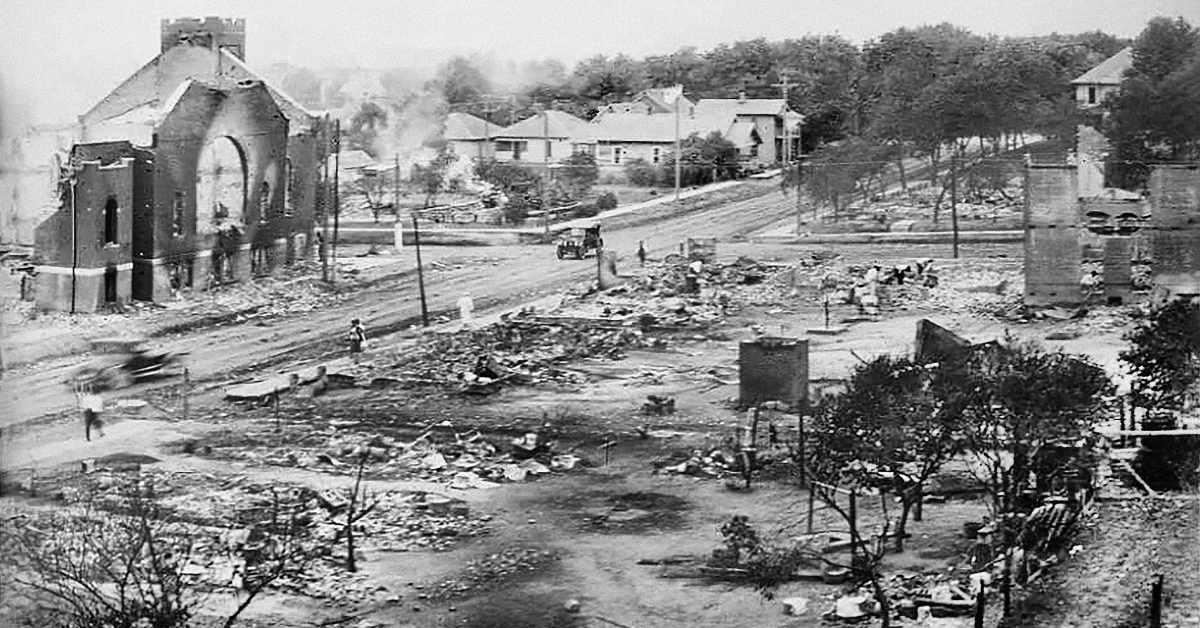The Tulsa Riot is one of America’s darkest moments. This tragedy was soon glossed over, with many involved moving away and the ones who stayed keeping silent on the matter. It wasn’t until the late 1990s that an investigation revealed the true extent of the attack.
Before the Tulsa Riot
The story behind the massacre is, as always, a complex one, but the results speak for themselves. Over the 31st of May and the 1st of June 1921, the mobs of white locals from Tulsa, Oklahoma, swarmed and attacked black residents and their properties, possessions, and businesses in the Greenwood District. Back then, the official list of victims numbered 36, but today, the estimates place the number up to 300.
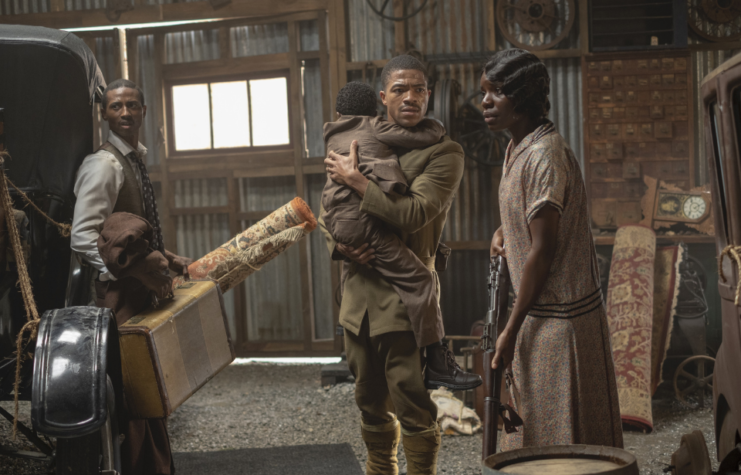
At this time in history, Tulsa was a melting pot. The American Civil War was still in living memory, and WWI had recently ended. The U.S. was still very much segregated, and Tulsa was no different.
Tulsa’s state, Oklahoma, was established in 1907, and soon after set about enforcing racially focused laws, like segregation and indirect prevention of Black Americans from voting.
As mentioned, WWI had concluded only a few years prior, and the entire world was still reeling from its effects. The many returning soldiers caused high competition for work, while black veterans pressured to be given equal rights after serving their country at war.
Tulsa also held a large community of well-educated and wealthy Black citizens in the Greenwood district, thanks to its successful oil industry. This was a virtually self-contained community with its own nightclubs, newspapers, and public services.
All of these factors made Tulsa a ticking time bomb. The pin of this bomb was pulled on Monday 30th of May 1921, on Memorial Day. Much of this part of the event is murky, as few physical reports remain.
What set it off?
In the late afternoon, a local 19-year-old shoe shiner named Dick Rowland entered an elevator in the Drexel Building to use a bathroom on the highest floor, which was reserved for Black residents only. Inside the elevator was Sarah Page, a 17-year-old white elevator operator. It is believed that Page and Rowland knew each other to some degree.
At this time, an employee in a shop in the Drexel building heard a female scream from the elevator and went to the elevator to help. He found Page in the elevator looking upset, and also witnessed a Black man running from the building. Assuming the worst, he notified the police.
After investigating the matter, and with Page herself admitting that Rowland simply grabbed her arm and was not interested in pressing charges, the police realized this was not a dangerous situation, but nonetheless wanted to speak with Rowland.
Rowland had run from the scene, but at the time, something as simple as tugging on a white girl’s arm could lead to his lynching or being subject to furious white locals. He was found and detained by police the next morning. After a sensationalist newspaper spread word of the event, angry crowds began to gather outside the local courthouse.
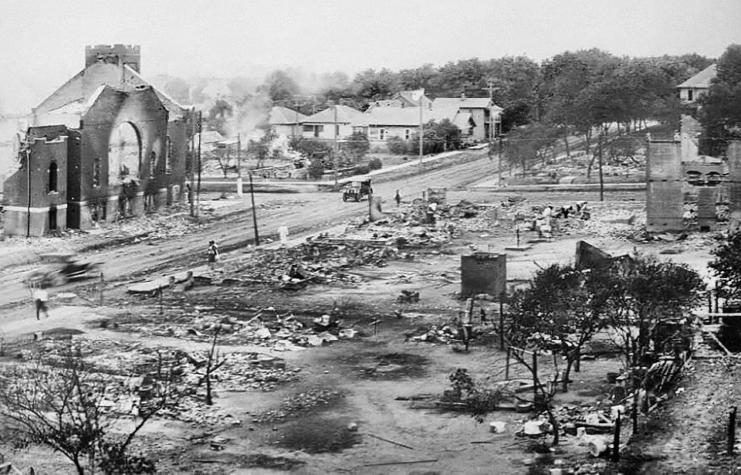
White mobs demanded Rowland be handed over and dealt with by them, but the sheriff refused. Hearing of the commotion, and understanding Rowland’s danger, Black men from the Greenwood area retrieved their guns and headed for the courthouse to assist the sheriff in keeping Rowland safe.
After the arrival of armed men, the enormous crowd of white men headed home to gather their own weapons, even attempting to raid a local National Guard Armory. Upon returning, the crowd had reached about 2,000 people, all on edge. Authorities made multiple attempts to split up the crowds and make them leave, but without any success.
It is believed after the escalating tensions, a white man tried to disarm a Black man, at which point, the gun discharged. This shot immediately caused the white crowd to open fire into the black crowd, firing back in return. Within seconds, around 10 people were dead.
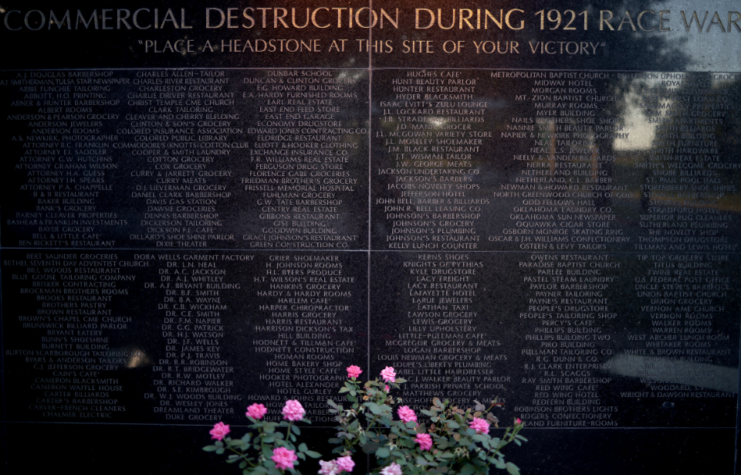
The Black men retreated back to Greenwood, with the white crowd close behind. In the chaos, the white men began firing on anyone in the street, whether they were involved or not, and began attacking and looting local properties. The national guard was brought in to control the situation, setting up in public areas.
The next day, on Wednesday the 1st, the fighting continued. An arriving train was caught in the crossfire, forcing the passengers on board to hide on the cabin floors for protection. More rioters made their way into Greenwood, continuing the destruction and igniting business and properties alike, starting major fires throughout the area.
The violence ended when the National Guard moved in
A whistle from a train sounded at 5 a.m., causing many to believe it was an official signal for an assault on Greenwood, which shortly followed. Attempting the defend Greenwood, Black residents tried to hold off the assault.
Outnumbered and overwhelmed, they retreated further. Shockingly, aircraft became involved in the battle, with white owners using their aircraft to shoot at Black defenders below and to drop firebombs onto buildings.
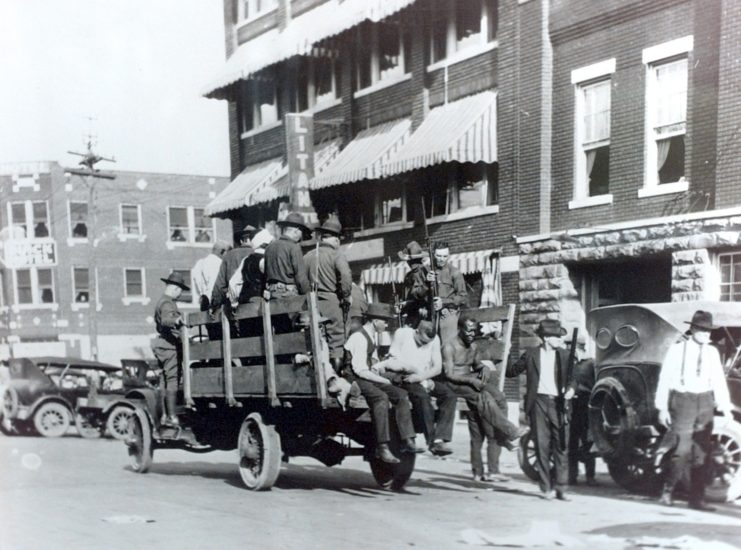
National Guard forces moved in from towns surrounding Tulsa, and martial law was declared at midday on Wednesday 1st. With their arrival, the violence wound down and was mostly contained soon after.
More from us: The American Civil War Origins Of The Word ‘Deadline’
The results of this battle were horrific, with reports ranging from nine white people and 30 Black people, to 68 Black and nine white dead. Other estimates, which place the casualties at 50 white deaths to 150–200 Black deaths seem more likely. On top of this, the massacre caused about $25 million in damages (adjusted for inflation).
The massacre killed many and permanently affected the lives of hundreds more. It has been mostly forgotten to history until recently, but thanks to the work of a dedicated few, the knowledge and memory of this terrible event won’t be forgotten.
